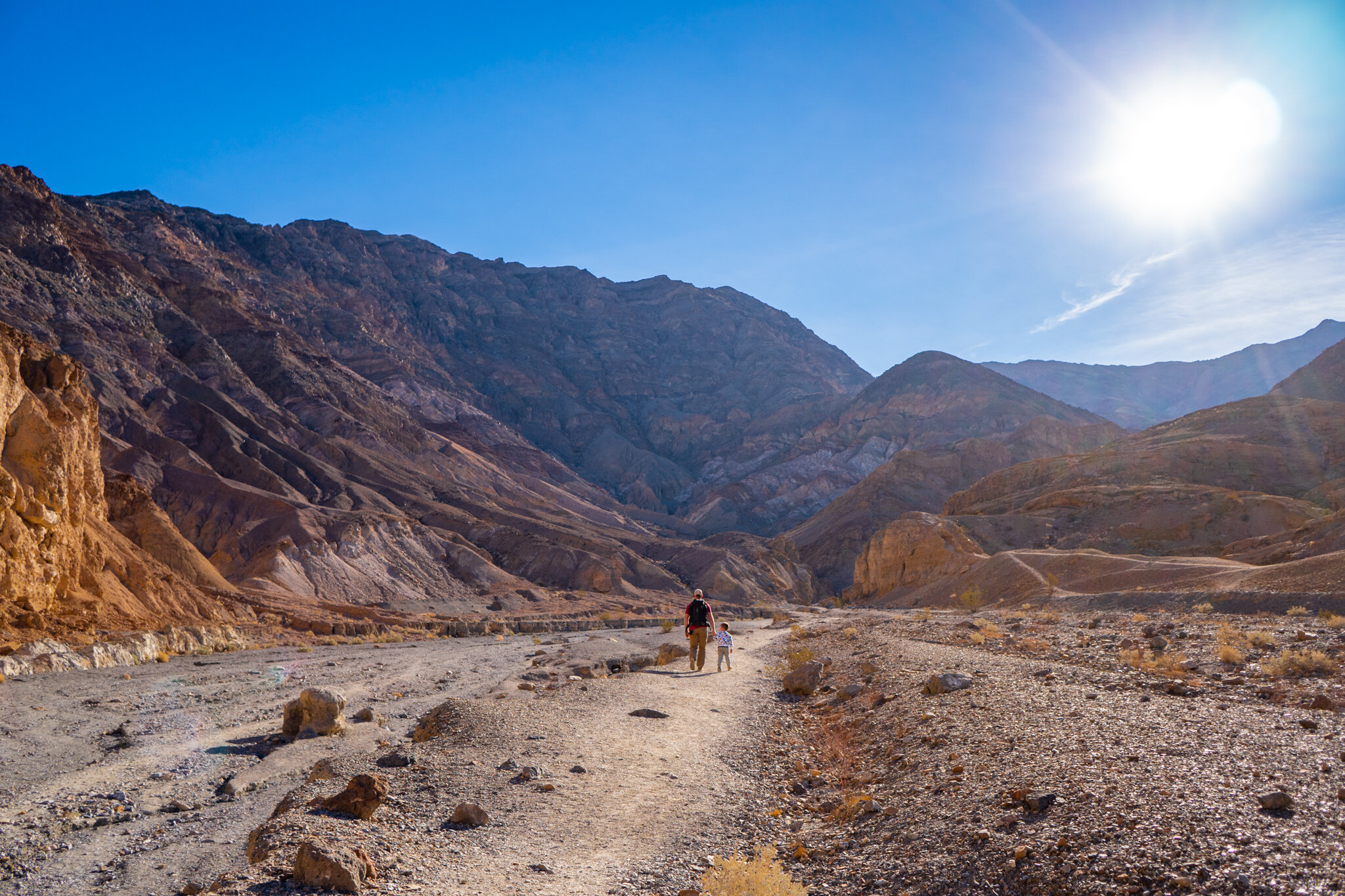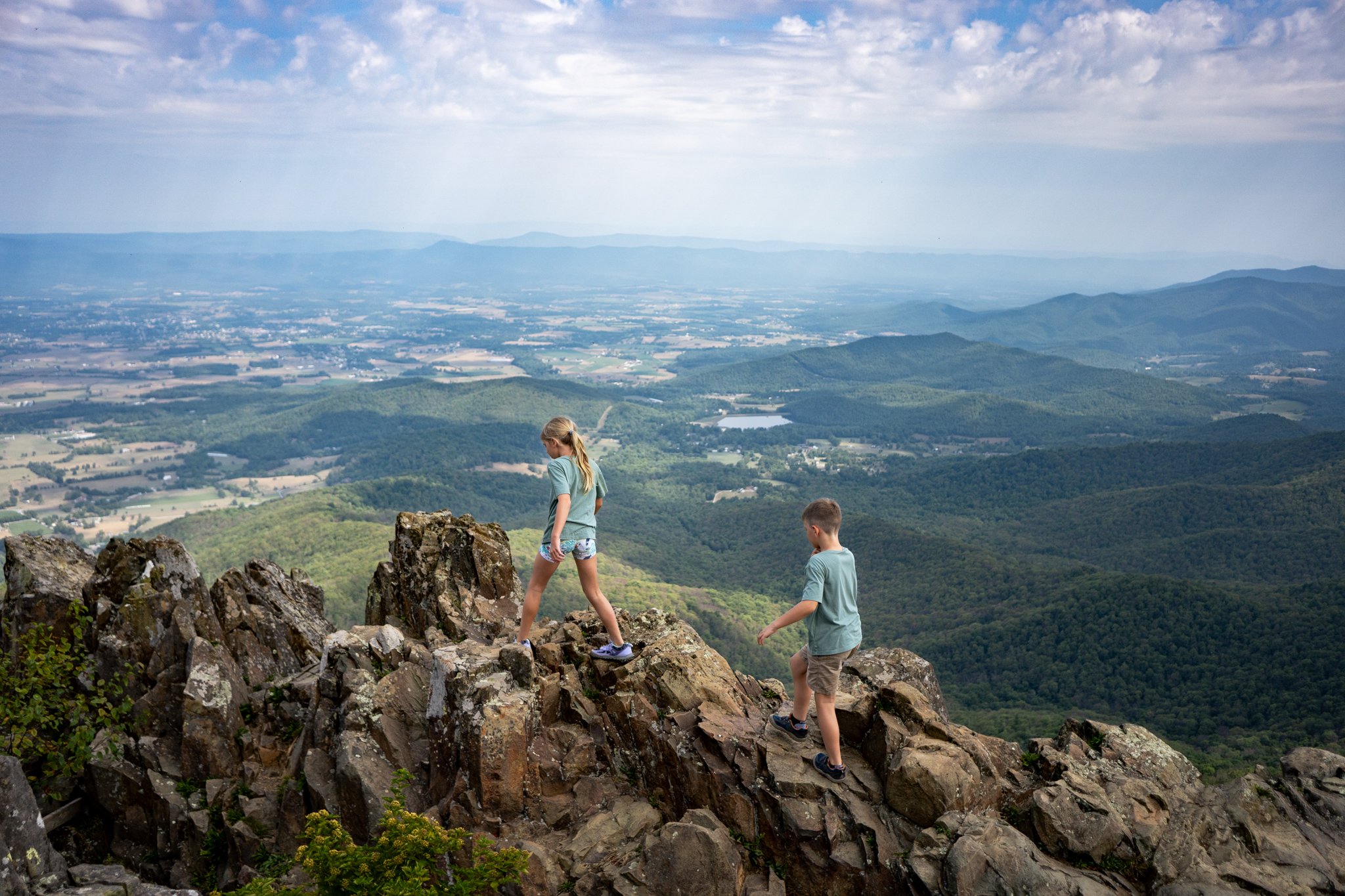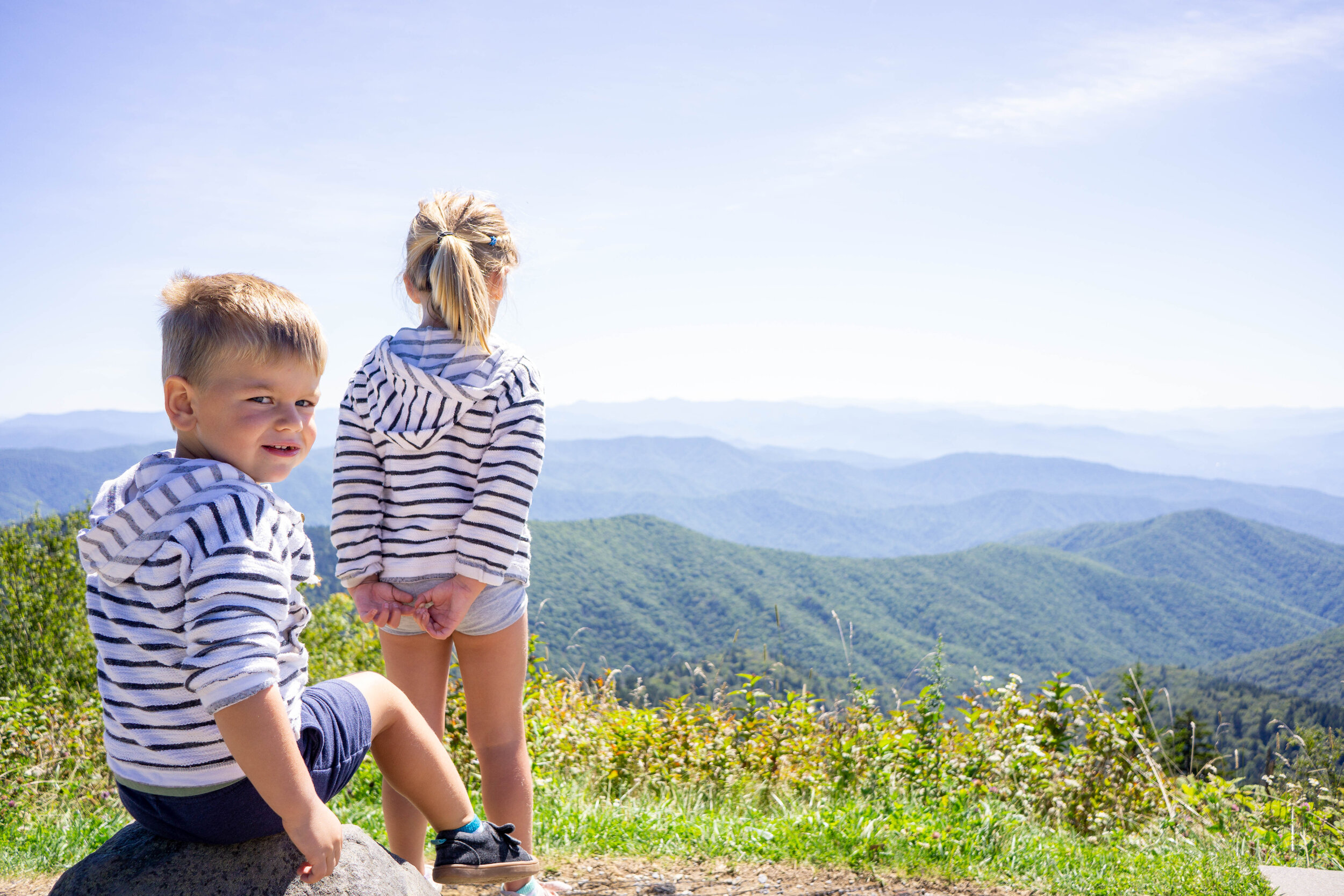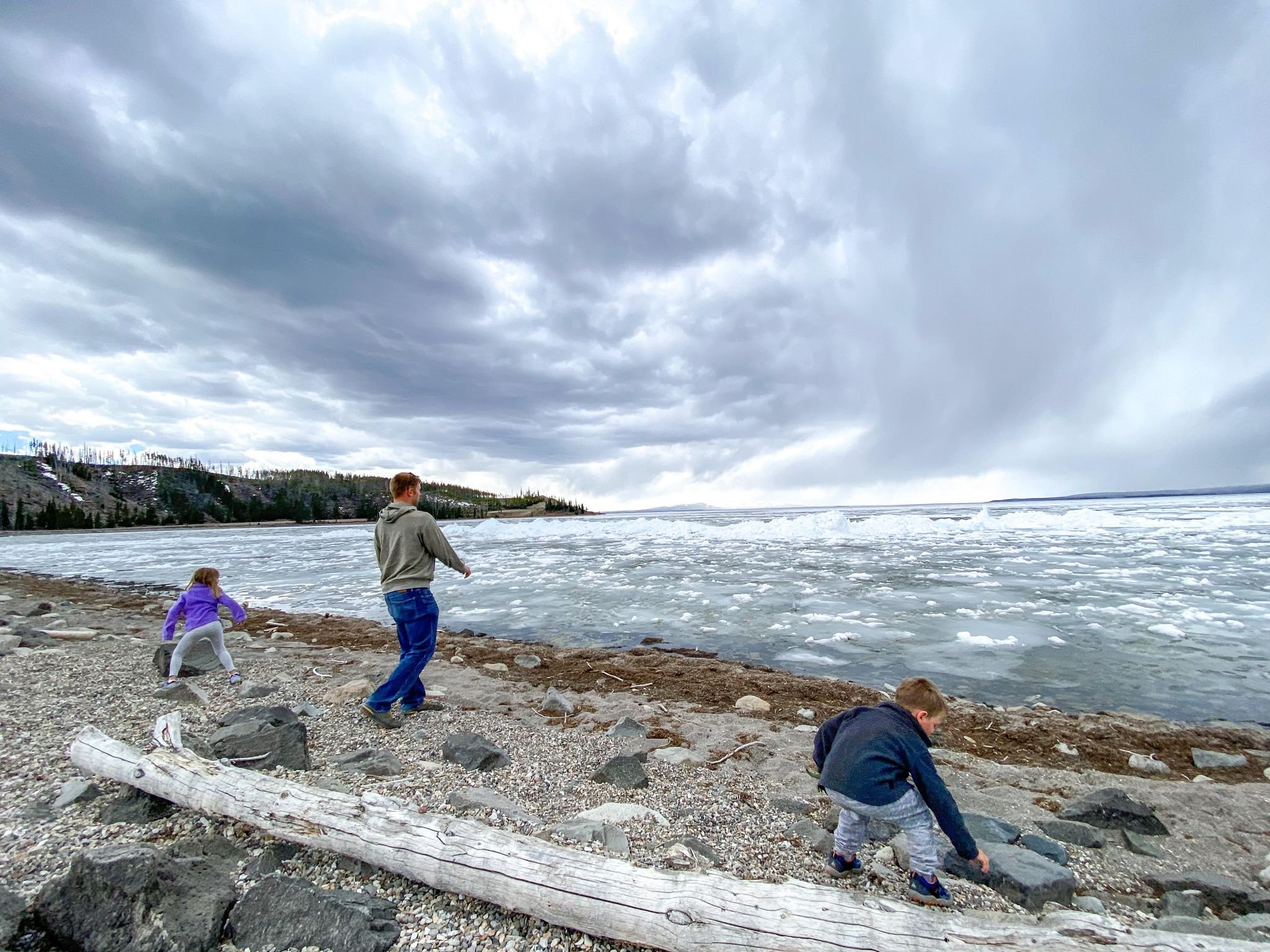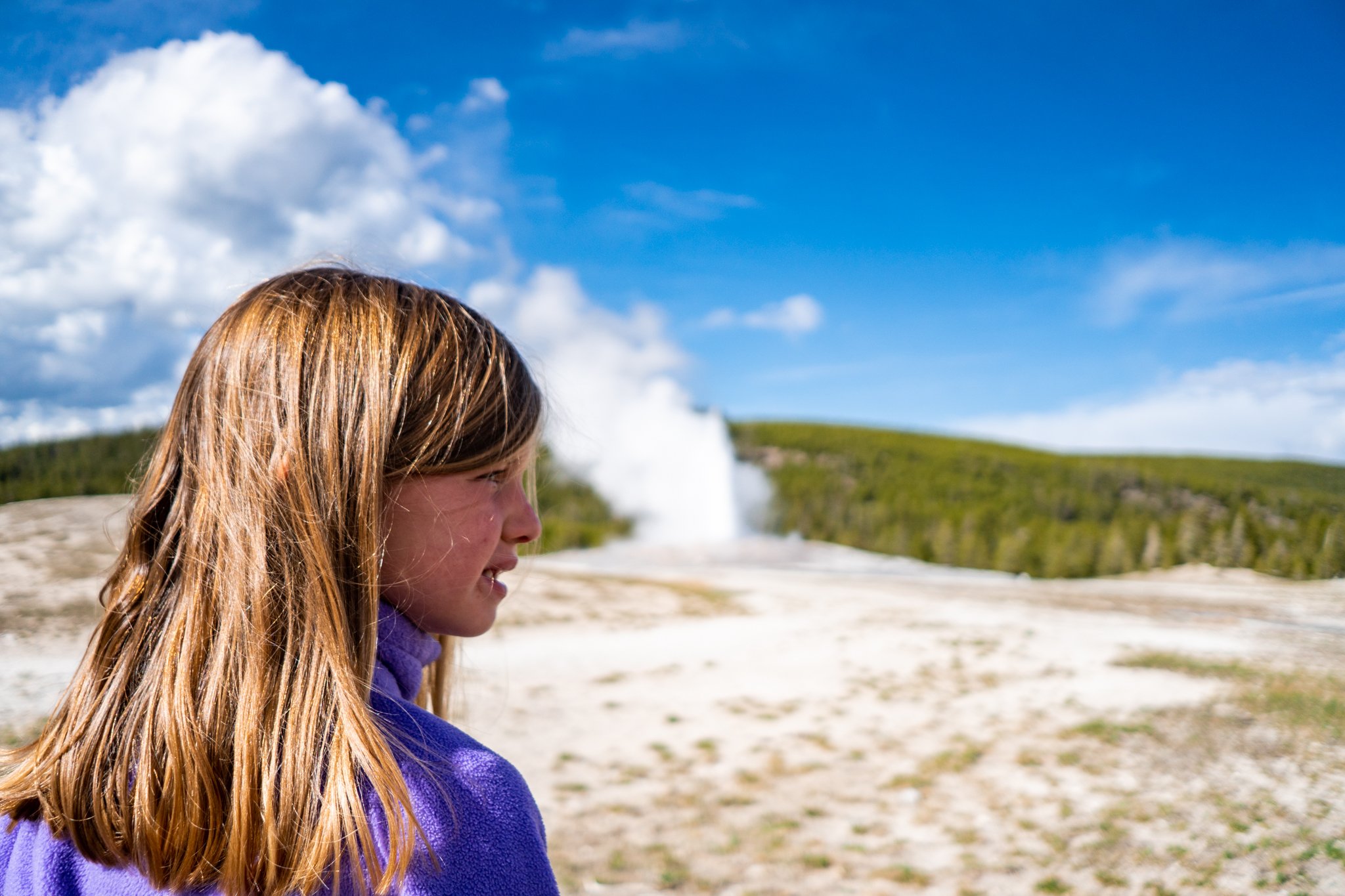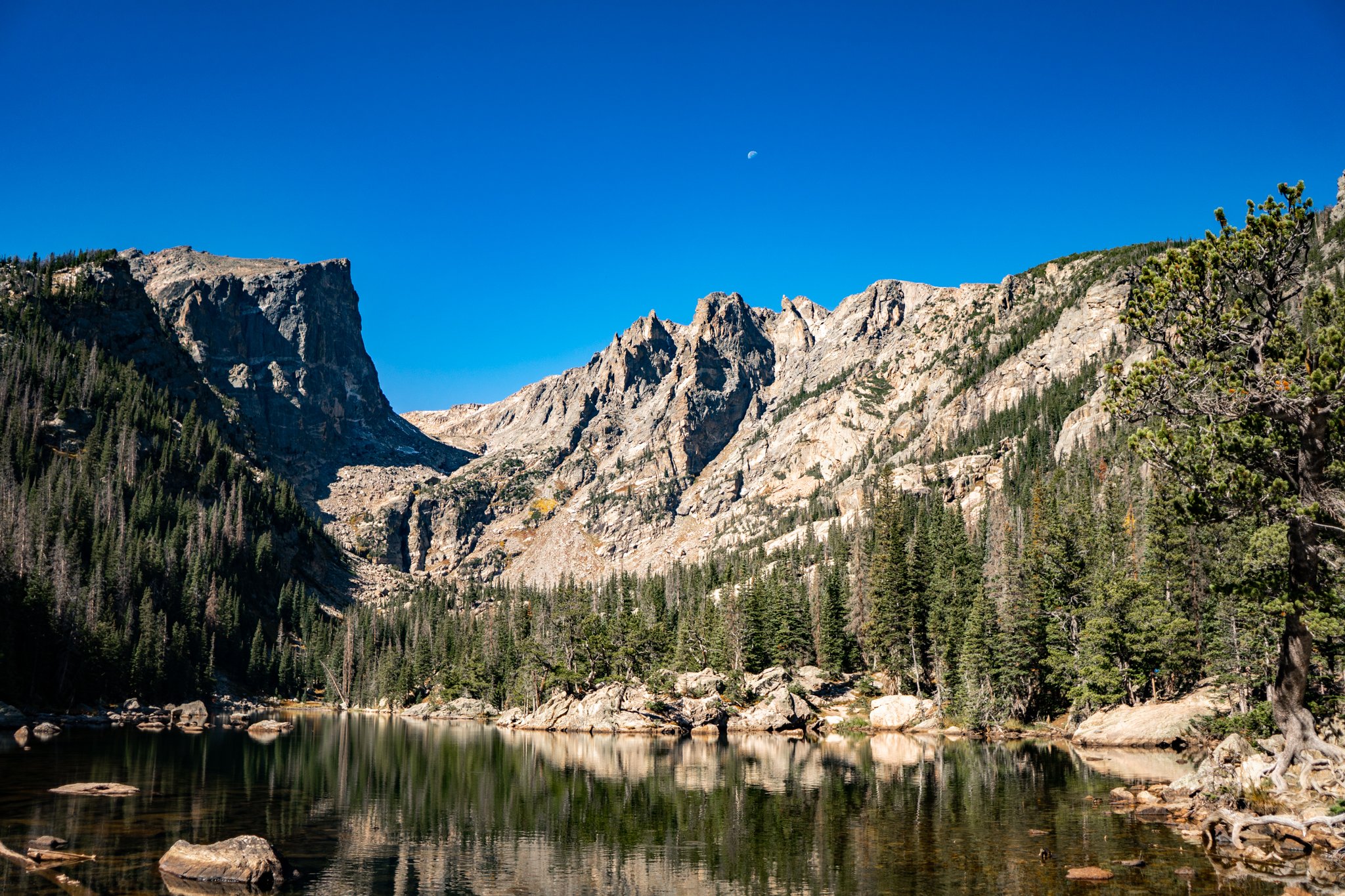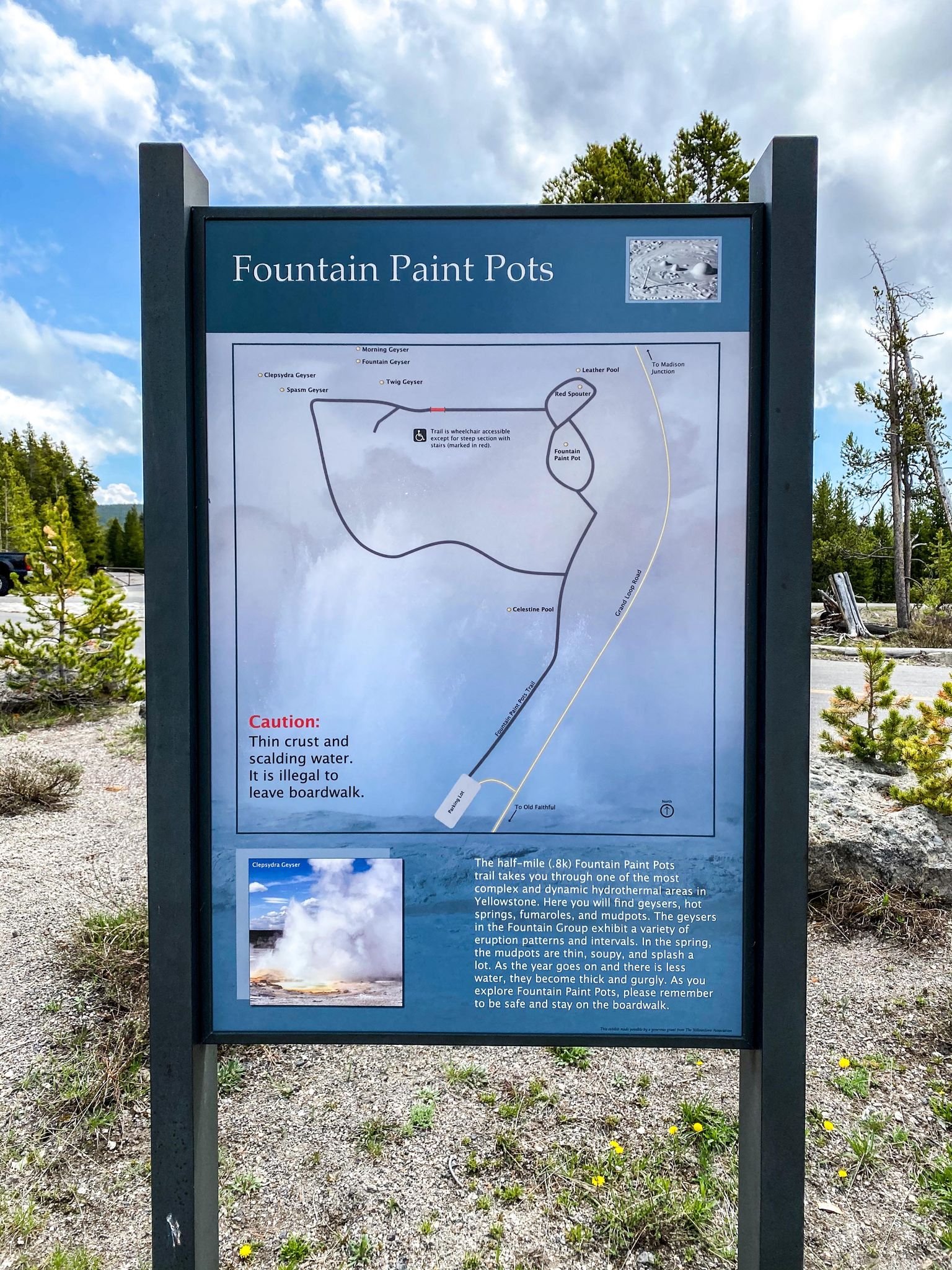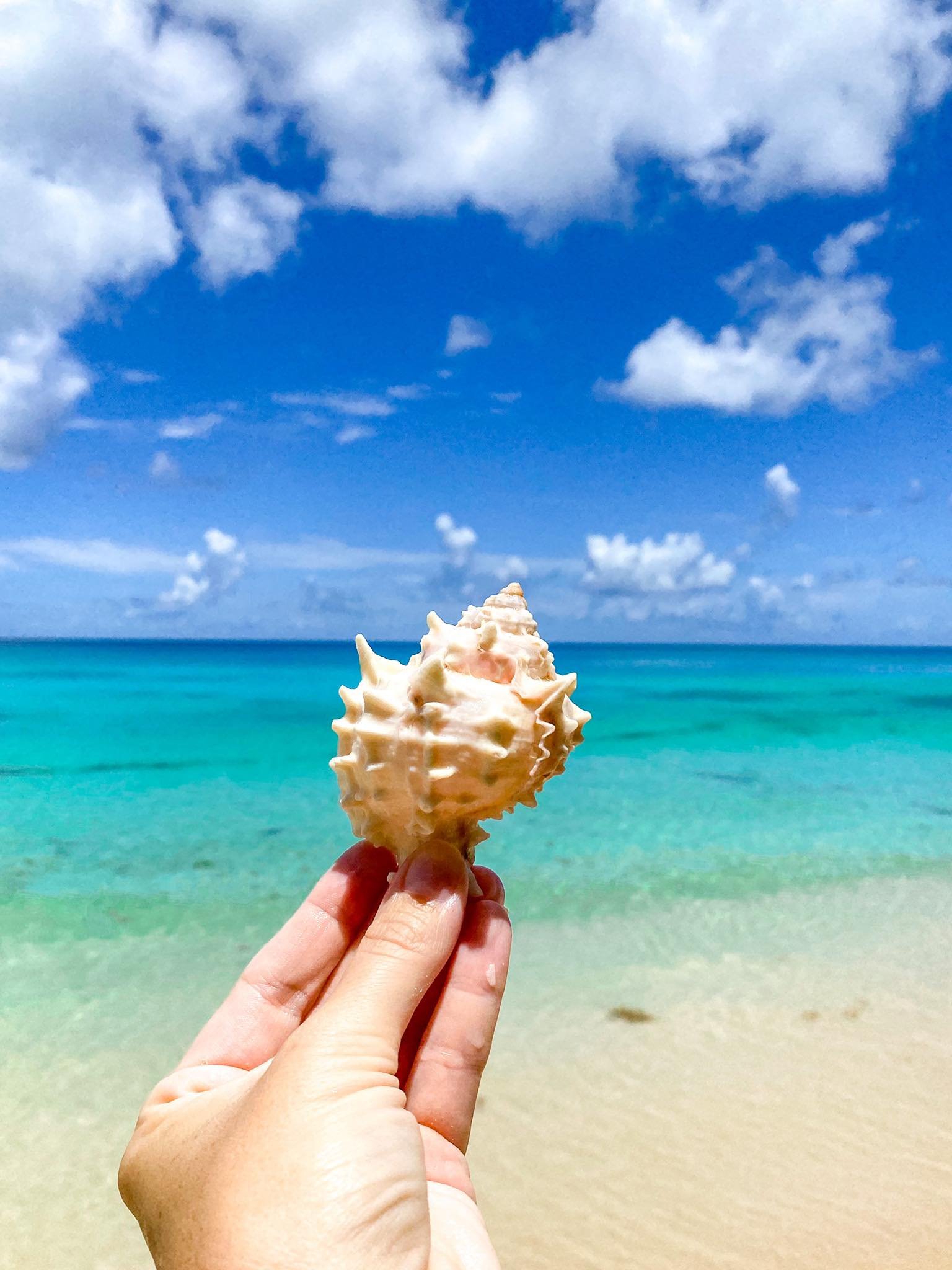The Perfect 4 Day Itinerary for Yellowstone National Park
/Yellowstone is vast and beautiful!
This site contains affiliate links to products. We may receive a commission for purchases made through these links.
If you’re looking for a perfect Yellowstone four day itinerary, you’re in the right place. I’ve put together four full days of activities that will show you the best of Yellowstone as you walk along bubbling mud pots, stroll along boardwalks with spewing geysers, and explore what many call the American Serengeti; the Lamar and Hayden Valleys. If you’re wondering how many days do you need in Yellowstone National Park, I recommend spending a minimum of 4 full days to explore this park. 4 Days in Yellowstone will give you enough time to experience the park highlights without feeling overwhelmed.
Yellowstone is an American Icon as well as the United States first National Park
Yellowstone National Park covers 2,221,766 acres with lakes, canyons, rivers, and mountain ranges. The park is also home to the massive Yellowstone Caldera. The caldera was formed 640,000 years ago and is capable of an eruption of magnitude 8. The Yellowstone Caldera is the cause of the more than 10,000 hydrothermal features, including more than 500 geysers inside the park. Yellowstone is home to about half of the world's geysers and the largest concentration of active geysers in the world! The park is home to more than 200 species of animals: from grizzly bears, wolves, black bears, badgers, pronghorns to bald eagles, elk, big horn sheep, and moose! Yellowstone is also home to over 300 species of birds!
Yellowstone National Park weather ranges from snow to bright summer days. The summers are short, comfortable, dry, and mostly clear and the winters are freezing, snowy, and partly cloudy. Over the course of the year, the temperature typically varies from 4°F to 76°F and is rarely below -15°F or above 84°F. The best time to visit Yellowstone National Park is arguably July-August, when temperatures are usually warm, most roads and facilities are open, and a full range of programs are available. However, Yellowstone National Park in Autumn or Yellowstone National Park in Spring are also amazing times to visit to avoid the peak summer crowds. An Yellowstone National Park winter itinerary will look significantly different due to closures in the park, so check the NPS site regularly!
Click HERE to see my Instagram Highlight on Yellowstone with more videos and photos from each area of the park.
Table of Contents
Click to Skip to:
Obligatory photo at the national park sign
Everyone must experience the Lamar valley and all the wildlife that lives here
Interactive Map of Yellowstone
The map below will show all of the spots highlighted in this 4 Day Itinerary for Yellowstone. Click the “Expand” option and you’ll be able to view the map of Yellowstone by Itinerary Day or show only the hikes. Simply check or uncheck the boxes to show more or less to simplify your 4 day Yellowstone Itinerary with Map!
Where to Stay in Yellowstone
In order to beat the crowds in Yellowstone National Park, the park lodges are going to be the most convenient for accessing park sites early in the morning or at off peak times. When you're looking for what to see in Yellowstone National Park in 4 days, it is best to think of the park as a figure 8. This figure 8 is called Grand Loop Road and it streches for 140 miles through Yellowstone’s most iconic spots. Each day of this Yellowstone National Park 4 day itinerary, you will do half of the top or half of the bottom of the 8. We spent 2 nights in Old Faithful Snow Lodge while exploring the bottom of the figure 8 and then moved to Mammoth Hot Springs Hotel & Cabins for another 2 nights while exploring the top of the figure 8. If you can get a room inside the park, do it! In order to beat the crowds in Yellowstone National Park, the park lodges are going to be the most convenient for accessing park sites early in the morning or at off peak times. This is a Yellowstone Itinerary from South Entrance, but feel free to move the days to whatever order suits your road trip itinerary.
Touring Yellowstone requires a lot of driving, so consider downloading THIS driving tour to explain what you are seeing as you move through the park.
Here I have outlined Yellowstone’s figure 8. Each day you will explore half of either the top or bottom of the 8.
a screen grab of the park service’s map to show the figure 8.
My review of Old Faithful Snow Lodge: This lodge is open year round and is fantastic. We had a room with 2 queen beds and it was spacious with plenty of storage room and a mini fridge. The hotel sits right at Old Faithful Geyser which means you can really beat the crowds and easily watch eruptions at dawn or dusk. There are several food options co-located with the hotel and a convenient gift shop in the building. We had no issues with parking and found the staff to be friendly and helpful. We stayed in one room with 2 adults, 2 children.
Click HERE to see my Instagram Highlight on Yellowstone with more videos and photos from each area of the park.
map of the property of old faithful snow lodge
My review of Mammoth Hot Springs Hotel & Cabins: We stayed in a deluxe room with 2 queen beds. Our room had a very nice claw footed tub and a huge closet. It also had a mini fridge and the view wasn’t terrible. This hotel is a newly renovated historic hotel and is very convenient to the Mammoth Hot Springs Upper Terraces and is an easy drive into the Lamar Valley. There are a few dining options co-located or directly across the street including Mammoth Terrace Grill and the Mammoth Hotel Dining Room. There is also a nice gift shop located in the lobby. We stayed with 2 adults, 2 children.
Out kids did a little school work while looking out the window in our room in mammoth hot springs!
There are 9 choices of where to stay inside Yellowstone, but the park lodges sell out insanely fast. Be sure to make your reservations at least 6 months in advance or call back daily to snag cancelations. This itinerary can easily be rearranged to fit whatever accommodations you area able to book.
Canyon Lodge and Cabins: 400+ guest rooms spread across 5 hotel-style lodges, with 100+ cabins being more rustic accommodations.
Grant Village Lodge: 300 guest rooms spread across 6 two-story, hotel-style lodges.
Lake Hotel and Cabins: Large lodge that has hotel room-style and cabin accommodations.
Lake Lodge Cabins: 186 cabins.
Mammoth Hot Springs Hotel and Cabins: Large lodge that has hotel room-style and cabin accommodations.
Old Faithful Inn: Rustic lodge with hotel room-style accommodations.
Old Faithful Lodge: Cabin accommodations.
Old Faithful Snow Lodge: Large lodge that has hotel room-style and cabin accommodations.
Roosevelt Lodge: Cabin accommodations.
If you prefer camping, Yellowstone National Park offers 12 campgrounds with over 2,000 established campsites inside the park. Much like the Yellowstone Lodges, campsites sell out insanely fast, so book at least 6 months in advance.
If you are having a hard time booking a room inside Yellowstone, check out these options for where to stay outside Yellowstone National Park. Scroll around the map to find the best places to stay near Yellowstone National Park. You can search by dates, number of guests, and find a place to stay that fits your group’s budget.
Day 1: What to do in Yellowstone National Park
Day one in yellowstone covers half of the bottom of the figure 8! (the red line)
Visit Mud Volcano
the trail is very well marked and easy to hike along
When you're looking for what to see in Yellowstone National Park in 4 days, it is best to think of the park as a figure 8. Each day you will do half of the top or bottom of the 8. For us, we entered the park from Grand Teton National Park, so we came in through the South Entrance of Yellowstone.
We’re starting day one of this Yellowstone 4 Day Itinerary with a walk along the boardwalk at mud volcano. Mud Volcano has a decent sized parking area with cars coming and going frequently, so if you don’t see a spot right away; circle around. Mud Volcano Area is a 0.6-mile (1 km) loop trail of boardwalks and pavement. This trail is the perfect trail to do with kids because there are often Bison walking around and it is a perfect spot for your first exposure to Yellowstone’s geothermal activity and amazing wildlife. If you do encounter a bison, be sure to stay 25 yards or more away from them, even if that means you must return the way you came.
Mud Volcano is close to one of the resurgent domes of the Yellowstone Caldera. The hills you see east of here make up the Sour Creek Dome. Resurgent domes are areas of active ground deformation, where the land moves up or down with the fluctuation of the magma chamber below. In several areas you will see bubbling mud which is how this area gets its name!
Click HERE to see my Instagram Highlight on Yellowstone with more videos and photos from each area of the park.
CHECK OUT MY GUIDE FOR: The Best Hiking Gear for Kids
Back to Top
mud volcano in yellowstone is a fun stop for everyone
mud volcano area has a nice boardwalk and educational signs the entire walk
Lake Butte Overlook & Yellowstone Lake
After the Mud Volcano, it’s time to head down to Yellowstone Lake and Lake Butte Overlook.
Yellowstone lake is situated at 7,733 feet (2,357 m) above sea level and is the largest high elevation lake (above 7,000 feet / 2,134 m) in North America. It spans 20 miles wide, 14 miles long and has 141 miles of shoreline. Unbelievably, the entire lake freezes over in winter.
We visited in late may and the snow was just starting to break up across the lake
You can take a guided tour of Yellowstone lake or bring your own boat to explore. However, boating in the Northern Rockies presents unique risks since the water temperatures on park lakes are in the 40s (Fahrenheit) in June, and may reach the 60s by late summer. Sudden strong winds can produce three to five foot waves, making open-water crossings very dangerous. Be sure to check the weather and follow all NPS guidelines for boating in the park.
Along the shores there are plenty of places to stop. Consider stopping for a picnic or just to skip some rocks.
We visited in late may and the snow was just starting to break up across the lake We stopped to let the kids toss rocks while taking in the teton mountains as a back drop.
Lake Butte Overlook is must see spot in Yellowstone. It offers sweeping views of Yellowstone Lake surrounded by geyser fields. The overlook is an easily accessible spot, reachable via a short road. There is a decent sized parking area and the overlook is steps from where you park; no hiking required. From the overlook, you can see the gorgeous Teton mountain range. In the summer, the area is speckled with wildflowers, while in the winter it offers snowy views of the ice covered lake. You can see in our photo below the lake ice was breaking up, but the views were still gorgeous.
CHECK OUT MY GUIDE FOR: The Best Hiking Gear for Kids
Back to Top
There are panoramic views of yellowstone lake from lake butte overlook & with no hiking!
West Thumb Geyser Basin
West Thumb Geyser Basin sits on the west edge of Yellowstone Lake. It is one of the lease visited basins in Yellowstone, but arguably one of the best. There are over 18 distinct geothermal features including: fumaroles, fish pot, paint pots, bluebell pools, abyss pool, and twin geysers. There is a large parking area with several picnic tables and restrooms.
hERE YOU CAN SEE BLACK POOL’S VIBRANT COLORS AND YELLOWSTONE LAKE IN THE BACKGROUND
The 1-mile boardwalk around West Thumb Geyser Basin is broken up into two zones. The best way to explore is take a right at the fork (from the path connecting the basin and the parking lot) and head down to the dividing walk.
lOOKING OUT YOU CAN SEE FISH POT STEAMING!
There are some exceptionally pretty pools along this walk, such as Collapsing Pool (surrounded by ridges of gray rock), Blue Funnel Spring, Abyss Pool and Black Pool. These pools are all strikingly beautiful with their shocking colors.
As you walk along the boardwalk near the water, keep an eye out for fish pot. This spot holds a fun historical story where visitors and park rangers used to catch fish in Yellowstone Lake and then dip them them in Fish Pot’s waters for a quick boil! Lunch is serve!
West Thumb Geyser Basin has is a large parking area with several picnic tables and restrooms.
If you’re wanting to get some extra steps in, consider hiking the 1.7-mile Yellowstone Lake Overlook trail. You’ll be rewarded with sweeping views of Yellowstone lake and see the gorgeous Grand Tetons in the back. There is an observation bench at the top to sit and take in the beauty of Yellowstone.
Click HERE to see my Instagram Highlight on Yellowstone with more videos and photos from each area of the park.
Back to Top
West Thumb Geyser basin has 18 distict geothermal features to see along an easy to walk 1-mile boardwalk.
Kepler Cascades
Kepler Cascades is going to be a quick, but rewarding stop. The viewing area is located at the end of a very short boardwalk right off the main park road.
kEPLER cASCADES IS A QUICK STOP IN YELLOWSTONE
The waterfall cascades drop approximately 150 feet over multiple drops into the Firehole River. The longest drop is 50 feet.
The Guide to Yellowstone Waterfalls and Their Discovery says that this waterfall was named after Kepler Hoyte in 1881. Kepler is the son of the Governor of the Wyoming Territory John Hoyt, who toured the park that year.
You can see the very short board walk from the parking area to the overlook
Old Faithful and Upper Geyser Basin
Old Faithful is the most iconic spot in all of Yellowstone National Park. People from all over the word come to see this geyser erupt.
We were able to see the iconic old faithful erupt 3 different times on our stay in yellowstone
Old Faithful is one of only six that park rangers currently predict out of the nearly 500 geysers in Yellowstone. It’s this predictability is what gives this Old Faithful it’s name. The time between eruptions has only lengthened by about 30 minutes in the last 30 years.
Old Faithful erupts ever 60-10 minutes. Eruptions last for 1-5 minutes. The water reaches 106-184 feet high. You can find the estimated eruption times from park rangers, information stations, hotel desks, and even the gift shops. The best spot to view the eruptions are from the Boardwalk Viewing Area, the Old Faithful Inn, or hike up to Observation Point (1.1 Miles RT) for a different vantage point and even fewer people
PRO TIP: Eruptions before 8-10 AM are the least crowded. Eruptions between 10AM & 6PM will be insanely crowded.
No matter what time of year, you should anticipate huge crowds for each eruption. Arrive 15-25 minutes prior to the estimated time and grab your seats. There are benches all around, but they fill very quickly.
Grab snacks and drinks before you head over. We found there is usually a rush of people to the concessionaire post eruption, so to beat the crowds - plan to grab your snacks prior to her show. (If you get a kids meal, it comes in a souvenir Yellowstone bus box - our kids loved these! )
After each eruption there is a mad dash to the parking lot and crazy traffic. Plan to stick around for 30-60 minutes after the eruption; spend some time at the visitor center or gift shops! Or just enjoy the scenery!
Old faithful’s eruptions vary in height and length of time
If you plan far enough in advance, consider staying at the Old Faithful Inn or the Old Faithful Snow Lodge. Both are just steps away from the geyser. We were lucky enough to see Old Faithful erupt 3 different times while in Yellowstone because we stayed right next to it at the Old Faithful Snow Lodge.
Once you’ve experienced Old Faithful, consider taking some time to explore more of the Upper Geyser Basin. The trail starts right in the area of Old Faithful and is 1.5-5 miles depending on how far you want to go. The Upper Geyser Basin Trail is composed of a network of paved paths and boardwalks that wind through Yellowstone’s Upper Geyser Basin. This is one of the best trails for viewing hydrothermal features in the park. The Upper Geyser basin is home to the highest concentration of geysers in the world. Castle Geyser, Tardy Geyser, Grand Geyser, Daisy Geyser, Riverside Geyser, Chromatic Pool, and Morning Glory Pool are just some of the features located here! Use the google map above to locate the trailhead!
Click HERE to see my Instagram Highlight on Yellowstone with more videos and photos from each area of the park.
Old Faithful is the most iconic geyser in yellowstone national park.
Day 2 in Yellowstone National Park
Day two of yellowstone is the second half of the lower part of the figure 8 inside the park
Day two in Yellowstone National Park will start early with sunrise at Grand Prismatic Spring. After experiencing this incredible spot, you’ll drive across the park to the Grand Canyon of Yellowstone to explore each rim. Then as you drive back toward Old Faithful, you’ll make several pit stops to explore the smaller, but still incredible features of West Yellowstone. If you only have ONE day in Yellowstone, this is how I would spend my day!
Explore Grand Prismatic Springs
Grand Prismatic Spring is one of the most popular spots to explore while visiting Yellowstone National Park. grand Prismatic is known for its vibrant colors and is the most photographed thermal feature in the park. I have Grand Prismatic Spring first thing in the morning so you have the best chance of experiencing the pools by yourself. We arrived to the parking area just before 6 AM and there were only two other visitors there. We kept our distance from the other travelers to give them the same private experience we wanted. We spent almost an hour walking along the boardwalks and didn’t see any other people until we were walking back toward the parking lot.
Suggested Hike: If you want to see Grand Prismatic Springs from the famous overlook (looking down onto the springs), check out the Fairy Falls Trail. This relatively flat, easy 4.5-mile (7.2-km) there-and-back trail leads to Fairy Falls, which plunges 200 feet (61 m) to create one of Yellowstone's most spectacular waterfalls. It also walks directly past the Grand Prismatic Springs Overlook.
Click HERE to see my Instagram Highlight on Yellowstone with more videos and photos from each area of the park.
Grand Prismatic springs is an amazing spot to explore
CHECK OUT MY GUIDE FOR: The Best Hiking Gear for Kids
Back to Top
The cool morning weather mixing with the heat of the pools at grand prismatic caused the most gorgeous steam
Depending on the weather, you may not have visibility to see the grand prismatic’s vibrant colors — but it is definitely worth the stop to see it for yourself
The Grand Canyon of Yellowstone
The Grand Canyon of Yellowstone is a must see in Yellowstone National Park. This massive geological site is 20 miles long and more than 1,000 feet deep. The canyon is between 1,500 and 4,000 feet wide. There are two waterfalls along the canyon: Upper Falls and Lower Falls. Upper falls stands at 109 feet and Lower falls stands at and incredible 308 feet in height.
There are several ways to explore this area, so take a look at all the options. We drove both rims and I also hiked from Grand View to Inspiration Point on the North Rim. It was a short, easy hike with gorgeous views.
The Grand Canyon of Yellowstone
First, you can drive both the North and South Rim. Both sides of the canyon have many overlooks that are a very short walk from the parking area, but offer absolutely spectacular views.
The North Rim Drive begins a little more than 1-mile south of Canyon Junction. This one-way road takes you to four accessible views of the canyon, each overlook features a different view of the canyon’s curves and the falls. At Brink of Lower Falls, glimpse Lower Falls and Upper Falls from paved accessible trails at the top or you can hike down the steep Brink Trail to get a closer view of the the Lower Falls. Make a stop at Lookout to see the Lower Falls again. A stop at Inspiration Point shows Lower Falls from a further distance, but with a larger view of the canyon. Grand View offers absolutely stunning views of the canyon and river.
The South Rim Drive is about 2 miles south of Canyon Junction. When you pull out of the North Rim Drive, you will turn left. South Rim Drive has less overlooks, but incredible views of of Upper Falls. Don’t miss the Upper Falls Viewpoint - take a few minutes to sit on the benches and take in the falls. Also plan to check out the canyon from Artist Point.
The Grand Canyon of Yellowstone is STUNNING
Hiking at Grand Canyon of Yellowstone: The second way to explore the Grand Canyon of Yellowstone is by hiking one of the many trails that link the overlooks. You can do the hikes as out and back or have someone drop you at trail head and walk to meet them at the next overlook. That is what I did. My husband dropped me at Grand View and I hiked over to meet him at Inspiration Point. It was an easy, but fantastic hike!
Click HERE to see my Instagram Highlight on Yellowstone with more videos and photos from each area of the park.
Back to Top
The grand canyon of yellowstone is a gorgeous spot that must not be missed on a trip to the park
Click to Read Our Other National Park Guides
CHECK OUT MY GUIDE FOR: The Best Hiking Gear for Kids
Norris Geyser Basin
Norris geyser basin is an iconic geothermal spot in yellowstone
Norris Geyser Basin is home to the Norris Geyser Basin Museum, Porcelain Basin, and the Back Basin. The Norris Geyser Basin is the hottest and oldest of Yellowstone's thermal areas.
The Porcelain Basin is barren of trees and provides a sensory experience in sound, color, and smell. This walk is an easy 3/4-mile trail and boardwalk. There are many long stretches with no hand rails here, so please use extreme caution.
The Back Basin is more heavily wooded with features scattered throughout the area. A 1.5-mile boardwalk circles this part of the basin. From the boardwalk you can see the famous Steamboat Geyser which is the tallest geyser in the world at 300–400 feet and Echinus Geyser! We saw many colorful pools along the path too. If you don’t want to do the full 1.5 miles, you can take the center loop back about halfway through.
The Norris Geyser Basin Museum is a great spot to learn more about Yellowstone’s geological and thermal features. The Museum is one of the original park buildings and consists of two wings separated by a breezeway. The Norris Geyser Basin Museum is staffed by National Park Service interpreters to help answer any questions you may have. Also, don’t forget to check out the bookstore!
Click HERE to see my Instagram Highlight on Yellowstone with more videos and photos from each area of the park.
There are so many different pools and geysers in the norris basin - be sure to walk the whole boardwalk to see it all!
The kids watching Steamboat Geyser errupt
Walking through the norris geyser basin museum breezeay. This is also the demarcation between the Porcelain Basin, and the Back Basin.
Artitsts Paint Pots
After leaving Norris Geyser Basin, head about 3 miles South until you see signs for the Artist Paint Pots. Artist Paint Pot are located in the Gibbon Geyser Basin and are home to some really neat thermal features including over 50 mud pots! There is a parking area that leads on a dirt path down to a boardwalk. The trail is 0.6 miles total. The first part of the trail is wheelchair accessible, but then it climbs up a hillside that overlooks the basin. We did see 2 different wheelchairs exploring the area!
If you have ever seen the Land Before Time, this spot in Yellowstone National Park reminded us so much of the movie. The bubbling mud pots are really cool to see and hear.
Click HERE to see my Instagram Highlight on Yellowstone with more videos and photos from each area of the park.
Here you can see the boardwalk trail that leads through the artists paint pot area
Fountain Paintpot Trail
Fountain Paint Pot Trail is a short 0.5-mile boardwalk. It is an easy stroll with one uphill, but it is definitely worth the stop. My kids had both fallen asleep in the car by the time we made it to Fountain Paint Pots, so I did this walk by myself (my husband stayed with the kids) and it took me less than 30 minutes.
A map of the Fountain Paint pots trail
I absolutely loved seeing the gorgeous blue water of the pools and even got to witness Jet Geyser erupting! The boardwalk wasn’t crowded and I was able to enjoy it at my own pace without feeling rushed along.
After a long day of exploring Yellowstone, head back to your hotel at Old Faithful and grab some dinner and maybe catch another Old Faithful eruption before sunset!
Click HERE to see my Instagram Highlight on Yellowstone with more videos and photos of this trail and the pools/geysers.
Silex is a gorgeous geothermal pool
Day Three in Yellowstone National Park
Day 3 is a day to catch up on anything you’ve missed in West Yellowstone as you make your way up to Mammoth Hot Springs. Today will be a more leisurely day than the previous days. The red line on the map below show the part of the park you will be exploring today.
Yellowstone day three
Black Sand Basin
We woke up early on Day 3 so we could have a full day of exploring without feeling rushed. We packed up our car and checked out of the Old Faithful Snow Lodge. Immediately we headed over to the Black Sand Basin and since it was snowing, we had the whole place to ourselves.
The boardwalk is 0.5-miles and walks you through all of the geothermal features. it snowed the morning we went! (May 21st)
The Black Sand Basin is located only about 1-mile from Old Faithful, so you’ll get there quickly. The basin is named for it’s black sand, or obsidian, which is formed when lava cools too quickly. This unique sand covers most of the basin. Black Sand basin is home to several stunning hot springs with the vivid colors known to Yellowstone and several geysers.
The basin is home to the Cliff Geyser, Opalescent Pool, Rainbow Pool, and Emerald Pool. Cliff Geyser erupts every few minutes and can be up to 40 feet tall! The boardwalk is a short and even 0.5-mile loop that takes you to see all of the very active geothermal features.
Back to Top
the snow obscured some of our views in black sand basin
Roadside Stops
As you are driving from Old Faithful up to Mammoth Hot Springs, there are many worthwhile roadside stops.
roaring mountain in late may — the steam coming off the mountain was gorgeous
ROARING MOUNTAIN: The first stop after exploring Black Sand Basin is a quick stop at Roaring Mountain. This mountain was named for the numerous fumeraroles on the western slope of the peak. During the 1900s, these fumeroles were so loud they could be heard for miles. Today, the sound is more of a hiss than a roar.
SHEEPEATER CLIFF: This really cool geological phenomena is made up of columnar basalt deposited by lava flows roughly 500,000 years ago. The basalt of Sheepeater Cliff are known as columnar basalt due to the hexagonal fracture lines that formed in the basalt when it cooled. You can find this exact type of columnar around the world in places like Devils Tower in Wyoming; Giants Causeway in Ireland; Svartifoss, in Iceland; Cape Stolbchaty, Russia; Kavadia mountain, India; and many other places - but lucky for you, you get to see it right here in Yellowstone. This spot is a historic site of the Eastern Shoshone tribe as the cliff was once a safe haven for women and children to hide during raids from other tribes. There is a parking area and a picnic area located right at the cliffs - yes, you can walk right up to them!
OBSIDIAN CLIFF: This area was designated a National Historic Spot in 1996. There is a small parking area and one of the park’s oldest park signs is here on the path out to the overlook. Expect to spend 15-20 minutes here.
Obsidian was first quarried from this cliff for toolmaking more than 11,000 years ago. The obsidian rock, also called volcanic glass, will shine and shimmer as you move it back and forth. Obsidian was used by Native Americans and prehistoric peoples in the Park to make arrowheads and weapons, and was often traded being found as far east as Ohio.
NOTE: The path takes you to an overlook across the highway from the actual cliff — you CAN NOT climb the cliff and taking any obsidian from the park is illegal.
Back to Top
sheepeater cliff is a very cool stop -
playing on ruby beach
Mammoth Upper Terrace
The upper terraces look like another planet
Upper Terrace Drive is a one-way, 1.5-mile long road that winds among hot springs and travertine formations. There are several parking spots located along the drive. I recommend hopping out and walking down along the boardwalk for an up-close look at the this otherworldly formation.
Fun Fact: For hundreds of years, Shoshone and Bannock people collected minerals from the Mammoth Hot Springs terraces and used it to make white paint.
Expect to spend about an hour exploring all of these unique terraces.
While there are stairs on a portion of the boardwalks, there are accessible boardwalks and accessible parking!
After exploring the Terraces, head down into Mammoth Hot springs for bite to eat or shop at one of the gift shops. In summer, grab some ice cream at the Mammoth General Store or visit the park rangers to get a Yellowstone Junior Ranger Patch! This is also a good time to check into your hotel or campsite to get settled before an early morning on the last day of your 4 day itinerary for Yellowstone!
READ NEXT: What to do in Grand Teton National Park
Back to Top
Mammoth upper terraces
We saw several elk along the loop drive through the mammoth upper terraces. We visited in spring, so the elk looked a bit shabby!
Day 4 in Yellowstone National Park
The 4th Day in Yellowstone calls for a very early rise. Today you’ll be explore the famous Lamar Valley and if you want to see the wildlife in action; you must be in the Valley for sunrise! While this is a leisurely day, there is a lot to see! Today is all about the wildlife of Yellowstone. Keep your eyes open for Elk, Grizzly and Black Bears, Big Horn Sheep, Badgers, Coyotes, Pronghorns, Bison, and maybe the most elusive big game — the wolves of Yellowstone.
The red line marks where you’ll be exploring on day 4
Slough Creek Campground
a photo of the wolf we watched through the scope — it was incredible seeing them in the wild
As you can see from the map, day 4 is all about the Lamar Valley in Yellowstone. The Lamar Valley in is often called America’s Serengeti for its large and easy-to-see populations of large animals. The valley is home to an insane number of animals packs, including the Yellowstone wolves which were re-introduced to the park in 1995.
We start our morning with a bee-line for Slough Creek Campground. Why this campground? Well, this is a place where you can spot Wolves. We left our hotel around 3:30 AM and headed straight for the campground. When we arrived there were already several other cars parked with scopes set up facing the mountains. We settled in and waited patiently as the sun rose. FINALLY, we started seeing other people start getting excited and we knew; the wolves were out! Thanks to the generosity of the people next to us, we were able to see a mother wolve and 4 of her pups through their scope. Our binoculars were not strong enough for a good look, but I have since found THESE BINOCULARS which are more powerful. You will definitely want binoculars in Yellowstone.
When you are in Yellowstone, ask the park rangers where in the Lamar Valley they have reported Wolf sightings — this will help you better know where the wolves are during your visit. I promise you, others will be there trying to see these amazing animals and you won’t want to miss it.
We had our own binoculars, but the spotting scopes were much more stable and reliable. grateful to generous strangers who let us see the wolves!
This is the land through the slough campground — the wolves were up on the hills and bison were walking in a herd behind us. It was an increidble sunrise surrounded by yellowstone’s finest.
Soda Butte
After we saw the wolves, we started our drive toward the East Yellowstone Entrance so that we could slowly make our way back through the Lamar Valley without missing anything.
Watching the herd of bison at soda butte
We stopped at the unique Soda Butte. This spot is an interesting hot spring cone where we found a herd of Bison grazing. The Cone itself is worth checking out and there are some small trails running through here if you’re up for a morning stroll.
***ALWAYS give the Bison PLENTY of space and never ever approach wild animals. Observe them from a respectful distance.
Soda Butte
Drive the Lamar Valley
We took a rest and had a snack on the banks of the lamar river
The road that winds through the Lamar Valley has many pullouts and I suggest stopping as many times as you are able. We pulled over many times to watch massive herds of Bison, we spotted a badger skittering across the road, we watched a black bear chasing a pronghorn through a field, we saw a few Big Horn ewes standing on the side of a hill munching on grass, Elk running through a hillside, had a coyote walk directly by us as we stood with others trying to spot a few Grizzly Bears. The Lamar Valley is unlike any other place we’ve encountered in the United States. The Yellowstone Wildlife are on full display out here, so pack a lunch and sit by the Lamar River or choose a pullout to watch the wild life. This is the day to slowdown and take in the beauty of Yellowstone National Park.
Click HERE to see my Instagram Highlight on Yellowstone with more videos and photos of the Lamar Valley including the video of the bear chasing the pronghorn and our close coyote encounter!
Listen to a driving park guide while you drive through Yellowstone.
this is a screen grab of a video of when the coyote walked right in front of us in the lamar valley. IT was crazy.
Another video screen grab of a herd of bison crossing the road as we drove through the lamar valley
Big Horn ewes eating grass in the lamar valley
Additional Stops in the Lamar Valley
While over in East Yellowstone, specifically the Lamar Valley, be sure to check out Tower Falls, Calcite Springs Overlook, and Petrified Tree! While we did stop at Petrified Tree for a few minutes, the portion of Grand Loop Road that leads to Tower Falls and Calcite Springs Overlook was closed when we visited. I do still think these spots are worth stopping to see after you’re done enjoying the day in the Lamar Valley.
The grand canyon of yellowstone is so amazing
Tower Falls: This is a 132-foot waterfall and in 2021, the park redesigned and constructed the 150 yard asphalt trail that leads to a view of Tower Fall. So this means, you’ll get the absolutely stunning views of the waterfall without much hiking! While you’re there, check out the unusual rock columns north of the falls were created by lava flow the cracked as it cooled.
Petrified Tree: This is a quick little stop just off of the main road that runs through the Lamar Valley. It has a parking lot below and a walkway up to the petrified tree that is inside a gate. There is a sign that explains more about how this petrified tree came to be.
Calcite Springs Overlook: This overlook is perched on a bluff above the narrowest section of the Grand Canyon of Yellowstone. The walk out to the overlook is only 0.25 miles and totally worth the time. The Calcite Springs Overlook is a great place to sit and try to catch sight of an Osprey, Peregrine Falcon, and Big Horn Sheep are often on the hillside across from the lookout. The springs are a unique geological feature of the park as they are hot enough at depth to liquefy large quantities of sulfur that are found here. Occasionally, the molten sulfur oozes the surface where it flows like molasses.
A hisostirc photo of visitors to the park sitting on the terraces in mammoth springs!!
READ NEXT: Check out my UTAH Park Guides
This four-day itinerary for Yellowstone National Park will take you on an adventure you’ll not soon forget. From the Lamar Valley to Old Faithful Geyser to the Grand Canyon of Yellowstone, your trip to Yellowstone National Park will make a lifelong impression on everyone in your group. If don’t have 4 full days for Yellowstone, pick and choose whichever days from this itinerary fit your road trip plans. If I could only pick 2 days, I would pick day 2 and day 4 to get as much as I could from my Yellowstone experience. And don’t worry, it doesn’t matter how many days in Yellowstone you have, it matters that you’re here! So let this guide help you decide what’s going on your National Park itinerary!
Since many people choose to pair Yellowstone and Grand Teton, check out my full guide to Grand Teton National Park HERE.
If you are still overwhelmed about planning a trip to Yellowstone, consider taking a guided wildlife or park tour. Some of them I recommend are listed below.
PIN ME:
AMAZON AFFILIATE DISCLOSURE:
There are links on this site that can be defined as “affiliate links”. This means that I may receive a small commission (at no cost to you) if you subscribe or purchase something through the links provided.
Big Brave Nomad is a participant in the Amazon Services LLC Associates Program, an affiliate advertising program designed to provide a means for website owners to earn advertising fees by advertising and linking to amazon.com, audible.com, and any other website that may be affiliated with Amazon Service LLC Associates Program.










